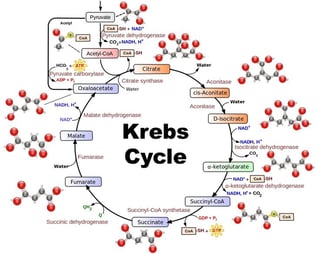The Chemical and Physical Foundations of Biological Systems section of the Medical College Admissions Test (MCAT) is conceptually one of the most difficult sections of...
Do I Really Need to Know the Kreb's Cycle?
Since the introduction of the biochemistry section to the Medical College Admissions Test (MCAT), premedical students across the country have bemoaned its addition to the exam. As a first-year medical student who just finished my biochemistry block, I am coming to realize the importance of learning the Kreb’s cycle and other seemingly arbitrary facts. This article is intended to provide tips and tricks on how to learn and memorize some of the more complex portions of the biochemistry section of the MCAT. I also hope to provide some clinical relevance to help motivate you in studying this dense material.

Memorizing biochemical pathways such as glycolysis and the Kreb’s cycle can be intimidating just based on the sheer volume of information. The key to memorizing these pathways is to first identify the important steps. These often coincide with the use of molecules such as ATP, GTP, NADH, and NADPH due to their irreversible or redox reactions. The highest yield studying comes from knowing these steps cold on your MCAT. Location also become an important factor physiologically. For example, the enzyme glucose-6-phosphatase is only found in the liver, meaning that glycogen can only be broken down in the liver. Lack of enzyme activity from glucose-6-phosphatase or glucose-1 phosphatase for example result in glycogen storage diseases such as Von Gierke’s or Pompe’s disease. These enzymes are critical for storage of glucose in glycogen or release of glucose from glycogen. There are many diseases linked to glycolysis, glycogenesis, glycogenolysis, Kreb’s cycle, urea cycle and many other biochemical pathways that are life threatening and require a strong understanding of how these pathways operate.
After you have memorized the key points in biochemical pathways, there are a few ways to fill in the blanks and memorize the remainder of these pathways. An easy way to memorize these pathways is to find steps that make sense intuitively. For example, citrate is synthesized from oxaloacetate by the enzyme citrate synthase. A more complex example is that isocitrate converted into alpha-ketoglutarate through a dehydration reaction by isocitrate dehydrogenase. As you go through the pathways, try to use your vocabulary and understanding of structures developed in organic chemistry to make these steps more logical rather than using brute memorization. You will remember the steps better and it will reflect in your MCAT score.
Finally, when all else fails utilize the memory palace! The memory palace is a favorite tool of medical students and can be found in a great Ted Talk (click here). To keep it simple, the memory palace is a way of linking words to visual cues. Typically, the person memorizing uses a place that is familiar to them such as their childhood home and mentally walks through the house as you go through the steps of memorization. For example, as you progress through each step of the biochemical pathway, you enter a room with visual cues that remind you of the molecules and enzymes linked to those. This technique is used by professionals who compete in memorization competitions and has been shown to be very effective.
For example, if I was trying to memorize glycolysis, I would imagine myself at the front door of my house holding a bottle of ‘glue’ which sounds like glucose and on the front door there is a hexagonal wreath which represents the enzyme hexokinase. As I reach to knock on the door I see the number ‘6’ on the knocker which represents that my glue will become ‘glucose-6-phosphate’ when it interacts with hexokinase. I’ll stop here and let you continue to play with this technique on your own.
Studying these pathways now will prove to be a great asset to you both in improving your score and when you begin medical school where you learn at a very rapid pace. Put in the time now and you will be glad you did later on!
About the Author
Jordan Salley is one of MyGuru's most accomplished MCAT tutors. Click here to learn more!
